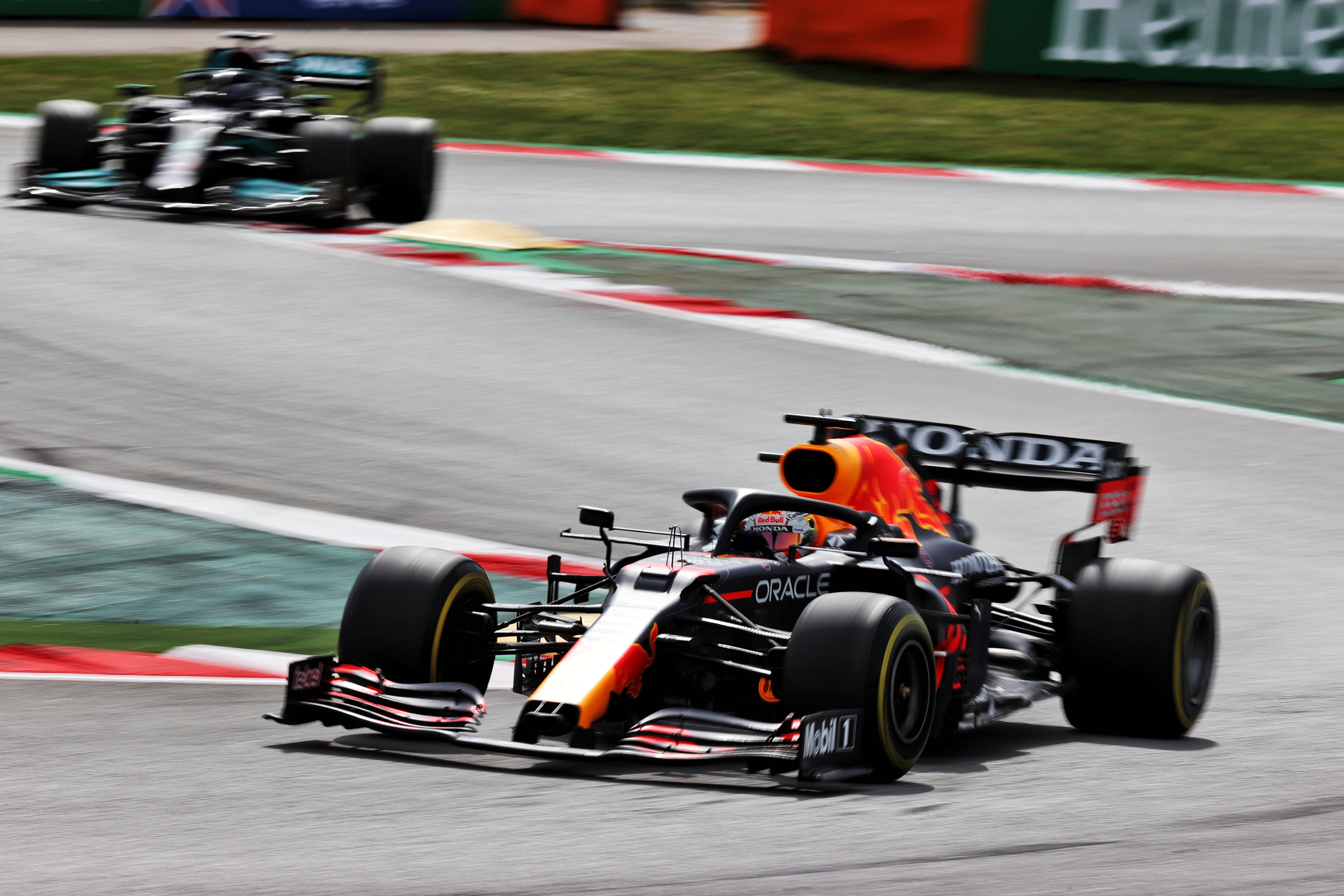Formula 1’s new 2022 cars should create overtaking opportunities that previously “wouldn’t have been practical”, reckons Mercedes’ trackside engineering chief Andrew Shovlin.
The technical regulations have been overhauled for 2022 with the objective of having cars that create less dirty air and are less sensitive to that wake when following another car.
It is hoped this will allow drivers to follow more closely and make for better racing, with the FIA’s early simulations claiming that a 2022 car retained 86% of its downforce while one car length behind another based on the new rules, compared to 55% for the current cars.
While this is unlikely to reflect the final cars built by the teams, Shovlin is optimistic the rules will have a positive impact on how much drivers can race each other.
“One of the big questions that the fans are going to want to know the answer to is are these cars going to give us better racing,” he said in Mercedes’ latest internally produced video previewing the new rules.
“They should certainly be improved. A huge amount of effort has gone into these regulations, so that the car in front doesn’t disrupt the airflow for the following car.
“That will allow the driver to stay closer and the closer you can get the more likely you are to be able to overtake.
“Will it make a track like Monaco an overtaking circuit? In reality, that’s quite unlikely. The straights are too short, the track’s too narrow. There really isn’t any easy place around Monaco to overtake.
“But what we’ll probably see at lots of the other circuits is that you can follow more closely, you can put the car ahead under pressure, it’s easier to get within an undercut range.
“And importantly, there will be straights now where hopefully you can make a passing manoeuvre stick, whereas previously it wouldn’t have been practical.
“So, all of that will start to get a flavour for it in Barcelona, in Bahrain. But really, it will only be when the lights go out for that first race that we’ll know whether this project has been successful in that very specific regard.”
Shovlin’s reference to making a pass “practical” could be interpreted in a couple of ways, as either the new rules will make it easier for cars to overtake where it was difficult, or they will create entirely new passing places.
The best chance of new-generation cars benefitting from new passing opportunities is if there is a cumulative effective from struggling less in dirty air.
It is not simply that a car needs to be able to follow more closely through a single corner preceding a straight for a driver to have a chance to overtake.

For example, Barcelona is one of the hardest tracks to pass at in F1. Even though the drag reduction system can be used on the start-finish straight in Spain, it follows the fiddly final sector and the final corner is still one that can be tricky to follow through.
Then the run to Turn 1 isn’t long enough for an overtaking car to get close enough or even pull ahead and then make a pass stick because of the profile of the first corner, which allows an easy defence on the inside unless the attacking car is well advanced.
But if the new rules make it easier for cars to follow at low and medium speed, it’s possible that cars will be closer through the final sector and onto the start-finish straight, and be able to complete a move into Turn 1.
Alternatively, Turn 4 could become a new overtaking place. If the cars can close in on the start-finish straight with DRS they may then be able to shadow the car in front with reduced turbulence through the sweeps of Turns 1, 2 and 3.
This may leave them close enough to benefit from a significant tow on the run to Turn 4 and challenge into the right-hander as the middle sector begins.
It also remains to be seen how the reduced downforce levels of the new cars will impact racing, especially as the cars are tipped to be faster in a straight line.
“What they wanted to do is clearly to create and generate the downforce from the ground compared to before, where it was generated by the ground but also mainly by the front wing, rear wing and the bodywork,” said Red Bull technical director Pierre Wache.
“It will affect the ride of the car, the mechanical grip and the drag of the car.
“This generation of downforce is quite efficient, and this type of car should be a lot quicker on the straight at these levels of downforce.”





